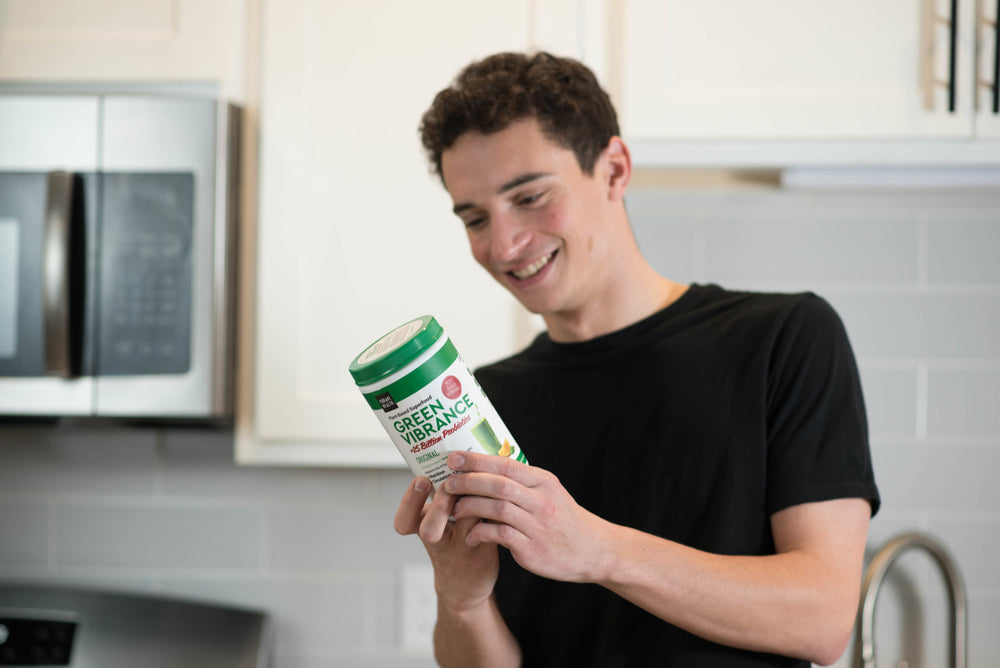If navigating the grocery store and examining food labels stresses you out, you‚re not alone. With all of the information out there, it can be completely overwhelming!
What the heck is that ingredient? Is this‚
healthy‚ snack really even good for me? And what about serving size?
Sound familiar? We hear you! That‚s why this week on the Vibrant Health blog, we‚re sharing five savvy ways to dissect food labels like a pro ‚ so you can feel in the know during your next grocery haul!
-
- Keep an Eye Out for Added Sugars
- Be Wary of Marketing Claims & Buzz Words
- Question Complicated Ingredients
- Be Mindful of Calories and Serving Size
- Eat Real Food
- Keep an Eye Out for Added Sugars
Is sugar listed as one of the first ingredients on your label? If so, you may want to put your snack right back on the shelf ‚ as the first ingredients listed make up the bulk of what you‚re eating. Other common sneaky names for sugar: sucrose, high fructose corn syrup, barley malt, dextrose, rice syrup, fructose and sucrose.
Also be sure to scan the nutrition label for total sugars and carbohydrates. Be on the lookout for hidden added sugars, which can sneak their way into even the ‚healthiest‚ of foods like yogurt, oatmeal, and your go-to condiments like ketchup.
Keep in mind:
artificial sugar substitutes such as stevia and aspartame are still highly controversial when it comes to health safety concerns, so it‚s best to steer clear and when in doubt,
eat real food. Look for natural sweeteners like honey, real fruit or monk fruit ‚ which is what we use to lightly sweeten products like our
Green Vibrance Chocolate Coconut powder.
- Be Wary of Marketing Claims & Buzz Words
Food marketing and labeling is loosely regulated, so just because a product looks pretty and is labeled ‚organic‚ or ‚natural‚ doesn‚t automatically mean it‚s healthy.
You‚ll still want to dig in and do your own research ‚ and that starts with reading the nutrition label and scrutinizing the ingredients! For instance, ‚organic‚ gummy bears loaded with added sugar does not make them healthy by any means, ‚made with whole grains‚ could just mean a
minimalamount, and ‚low fat‚ chips are still a processed snack food at the end of the day.
- Question Complicated Ingredients
As a general rule of thumb, we suggest that if you can‚t pronounce an ingredient, you should question it! Avoid complicated mystery ingredients like nitrates/nitrites (preservatives commonly used in meats like bacon), artificial food coloring (like Red 40) and other fillers and chemicals. These common
food additives may cause adverse effects on our health‚ particularly for children.
Even ‚natural flavoring‚ can be packed with hidden additives and preservatives. Eek! Refined grains, hydrogenated oils (like soybean oil) and added sugars are common culprits that sneak their way into your food as well. With that said, it‚s best to stick to ingredients you know and trust!
- Be Mindful of Calories and Serving Size
While calorie count and serving size isn‚t
everything,it‚s smart to be mindful of the numbers. For instance, your favorite kombucha may only have 5 or 6 grams of sugar, until you realize the serving size is just the bottle.
At the end of the day, do your best to make the healthiest decision for
you; you don‚t have to eat 100% clean all of the time. Also, if you‚re splurging on a higher calorie snack, simply slow down and be mindful of portion control.
-
Eat Real Food
When all is said and done, it‚s best to keep it real when it comes to what you put in your body. Simply put: eat real, whole, unprocessed foods as much as possible. These foods don‚t come with a label; rather they come straight from Mother Nature. Here‚s a little tip: shop the perimeter of the grocery store as much as possible to avoid the overwhelming aisles ‚ where most of the processed junk food is stashed!
DISCLAIMER: This information is not intended as a substitute for advice provided by a competent health care professional. You should not use this information in diagnosing or treating a health problem. No claim or opinion in this blog is intended to be, nor should be construed to be medical advice. If you are now taking any drugs, prescribed or not, or have a medical condition, please consult a competent physician who is aware of herb/drug interactions before taking any herbal supplements. The information presented herein has not been evaluated by the FDA or the Department of Health and is not intended to diagnose, prevent, cure, mitigate or treat any disease or illness.
Why Trust Vibrant Health?
At Vibrant Health, we’ve been pioneers in science-backed nutrition for over 30 years, formulating transparently sourced superfood supplements that prioritize real results. Our blog is an extension of that commitment—a trusted resource for expert-driven wellness insights.
Every article is crafted with nutrition expertise, backed by the latest scientific research, and reviewed by our in-house Certified Health Coaches and Product Educators. We break down complex health topics into practical, actionable advice—helping you make informed choices about superfoods, supplementation, and holistic wellness.As a brand that has earned thousands of 5-star reviews and the trust of health professionals, we ensure that our content reflects the same quality, integrity, and transparency as our products.
Your wellness journey deserves accurate, credible, and empowering guidance. That’s why Vibrant Health’s blog is here—to help you live a healthier, more vibrant life, backed by real expertise




